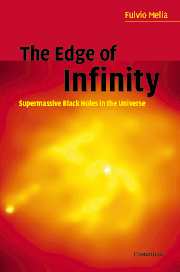2 - Weighing supermassive objects
Published online by Cambridge University Press: 11 August 2009
Summary
Supermassive black holes are certainly the most powerful objects in the universe, yet even this attribution may not adequately convey the severity with which they stress their surroundings. Yes, their force of attraction is inexorable, but more than this, it is – as far as we can tell – infinitely unassailable once matter approaches so close that even something moving at the speed of light cannot break free. The radius at which this happens is known as the black hole's event horizon, for nothing within it can communicate with the universe outside. Thus, we have no way of directly seeing such an object. Instead, its presence may be deduced on the basis of the shadow it casts before a bright screen, such as a dense cluster of stars. To have any hope of carrying out such an observation, however, we must be close enough to the highly concentrated mass to actually resolve the dark depression among the myriad other details likely to be present in its environment.
We become aware of a supermassive black hole primarily because of the incomparable cosmic power it exudes. For example, the image of 3C 273 in Fig. 1.2 attests to its nature as one of the brightest beacons in the visible universe. Yet it should be black, drawing everything into a catastrophic fall toward oblivion, releasing nothing – particles or light – to breach its cloak of secrecy.
- Type
- Chapter
- Information
- The Edge of InfinitySupermassive Black Holes in the Universe, pp. 17 - 33Publisher: Cambridge University PressPrint publication year: 2003

